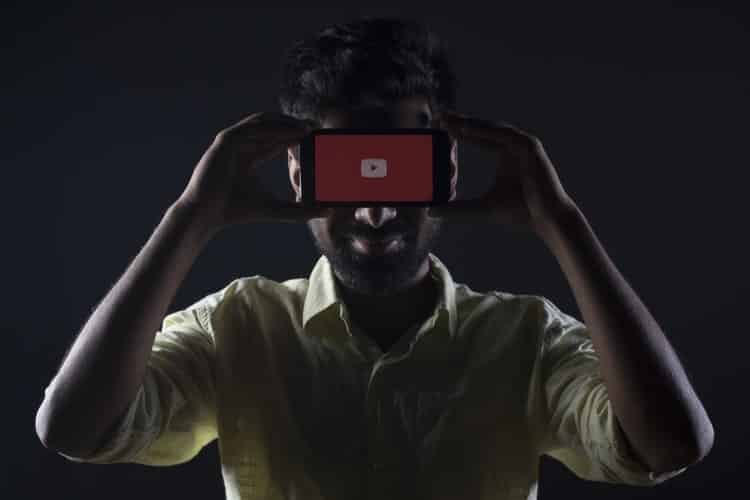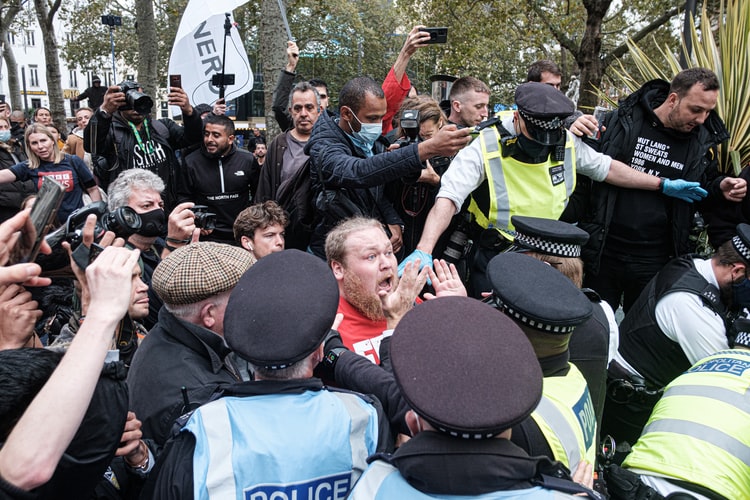Earlier in October, the video-sharing giant YouTube became the latest social media platform to take action to stop QAnon. The said group is the pro-Trump conspiracy theory community. Their online fantasies about a cabal of satanic elites ruling the world have turned into offline violence.
The video-sharing giant announced in a blog post that it would update its hate speech and harassment policies. This step is done to prohibit content that targets a group or individual with conspiracy theories that they use to justify real-world violence.
Also, this new policy will prohibit content that promotes QAonon and related conspiracy theories such as Pizzagate. Notably, Pizzagate falsely claims that the top Hollywood elites and Democrats are running an underground sex-trafficking ring located in the basement of a Washington pizza restaurant.
Apart from YouTube, some social media platforms took steps to stop the spread of QAnon. The reason is that the group has been frequently linked to vandalism and violence. Before the change in YouTube’s policies, the social media giant Facebook hardened its policies related to QAnon content. The company compared it to a militarized social movement that was increasing its violence. Similarly, smaller platforms, including Etsy, Pinterest, and Thriller, also announced that it would restrict QAnon content.
Under the new YouTube policy, which took effect shortly after the company’s announcement, content that harasses or threatens a person by suggesting they are complicit will be banned. Still, news coverage of these videos and theories that discuss the QAnon theories without targeting anyone or any group may be allowed.
The Beginning of the QAnon Movement
The QAnon movement started in 2017. Back then, an anonymous poster who hides under the name “Q Clearance Patriot,” or only “Q” started posting cryptic messages on 4chan, a notoriously toxic message board. They claimed that he has classified information about a secret battle between a global cabal of elites and Donald Trump, the US president.
Believers of QAnon identify themselves as “bakers.” When Q said that he has classified data, these bakers began discussing and decoding them on real-time platforms such as Twitter and Reddit. They tried to connect the dots on a modern rebranding of centuries-old anti-Semitic tropes. Notably, these topes falsely accused well-known Democrats, such as Hillary Clinton and George Soros, a liberal financier, of being involved in a global sex-trafficking conspiracy.
Several Platforms Played a More Significant Role in Moving QAnon From the Fringes to the Mainstream
Apart from YouTube, a few platforms played a significant part in moving QAnon from the fringes to the mainstream. In the early days of the movement, QAnon followers created YouTube documentaries that provide an introductory crash course in the movement’s core beliefs. QAnon posted the said videos on Facebook. Most of the time, they use those videos to draw recruits. Some even gained millions of views.
Also, QAnon followers began hosting YouTube talk shows where they discuss new developments related to the theory. Some of those YouTube channels garnered large numbers of audiences. The owners of those channels were able to make their voices prominent within the movement.
Mike Rothschild, a conspiracy theory debunker who is currently writing a book about QAnon, said that YouTube has a significant role in the Q mythology. He added that there are famous figures in the Q world who are making videos daily. They get hundreds of thousands of views. Besides, the way they package their theories in video clips that are a world away from the straight to camera proves so prominent in conspiracy theory video making.
Did QAnon Content Creators Buy YouTube Views To Spread Faster?
Furthermore, the video-sharing giant tried to curb the dissemination of conspiracy theories and misinformation on its platform. It also changed the recommendations algorithm that sends millions of viewers to what it considered low-quality content. Last year, YouTube started to demote what it named “borderline content.” Such are videos that tested the platform’s policies. However, they did not entirely break them outright. So, YouTube only reduces those videos’ visibility in recommendations and search results rather than taking down marginal content. To combat this, many people think the creators bought YouTube views to counteract the effect of this action. While there is as much evidence of this as of QAnon itself, the number of views needed would cost an absolute fortune. It is doubtful that the people selling T-Shirts for $25 each would be willing to invest the $100,000s needed for the millions of views they recieved.
For better or worse, these were all very much “real views” from our humankind.
According to the video-sharing giant, the algorithm’s changes reduced the number of views that marginal content gains from recommendations by more than 70 percent. However, it is essential to note that that figure cannot be independently verified. Also, YouTube said that among a set of pro-QAnon channels, the number of views that come from recommendations decreased by more than 80 percent after its policy change in 2019.
Furthermore, social media platforms have been under scrutiny for their policy decisions in the past months. The reason is that Democrats are accusing these social media platforms, especially the giant ones of not doing enough to stop the dissemination of right-wing information. Also, Republicans, such as the former US President Donald Trump, paint them as censorious platforms that control free speech.
Final Thoughts
There is no denying the social media platforms play a significant role in the dissemination of information. Unfortunately, some individuals and groups choose to use the platform to spread misinformation and baseless conspiracy theories. No one can deny that these platforms are doing their best to censor false information. But with the large numbers of inaccurate information circulating on the platforms, it isn’t straightforward for them to stop the spread of those within their platforms.
And even if they succeed in cracking down false information, perpetrators of misinformation, such as QAnon and Pizzagate, will indeed find a way to continue spreading conspiracy theories that do not have any base.
Moreover, social media users must also be vigilant about the information they absorb. The internet is full of fake news. For this reason, we must not rely on social media companies to combat that misinformation for us. We must be aware of what is real and what is not.
Date: February 3, 2021 / Categories: News, / Author: michb


